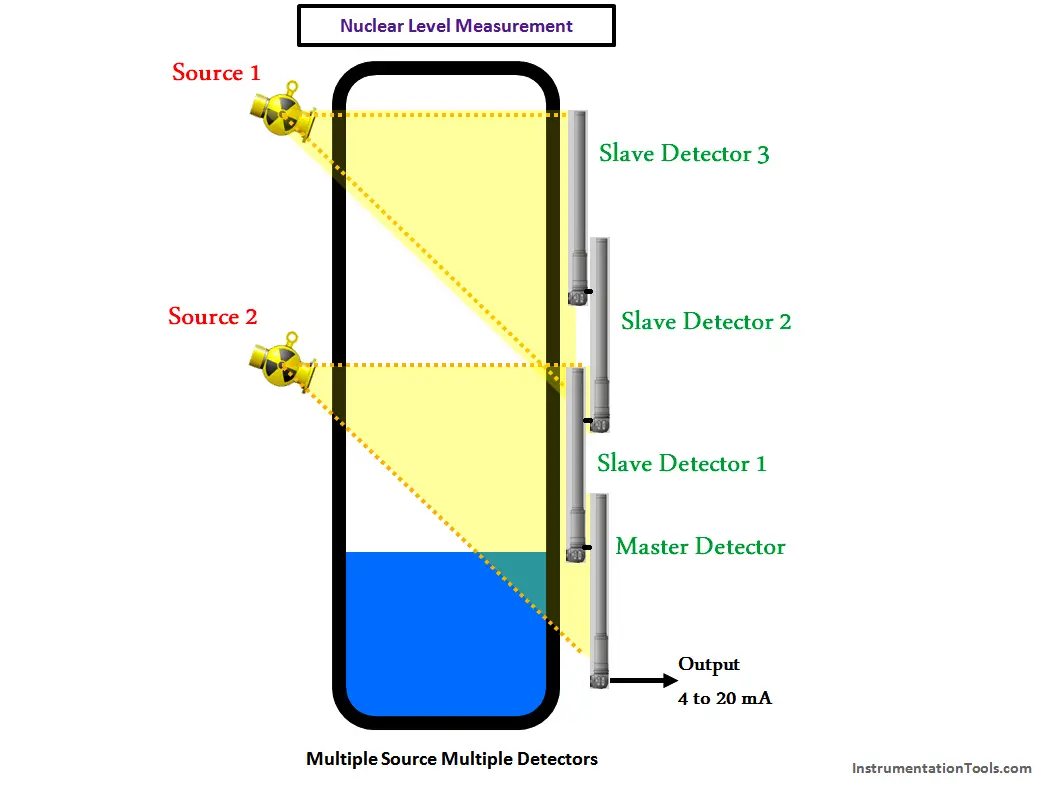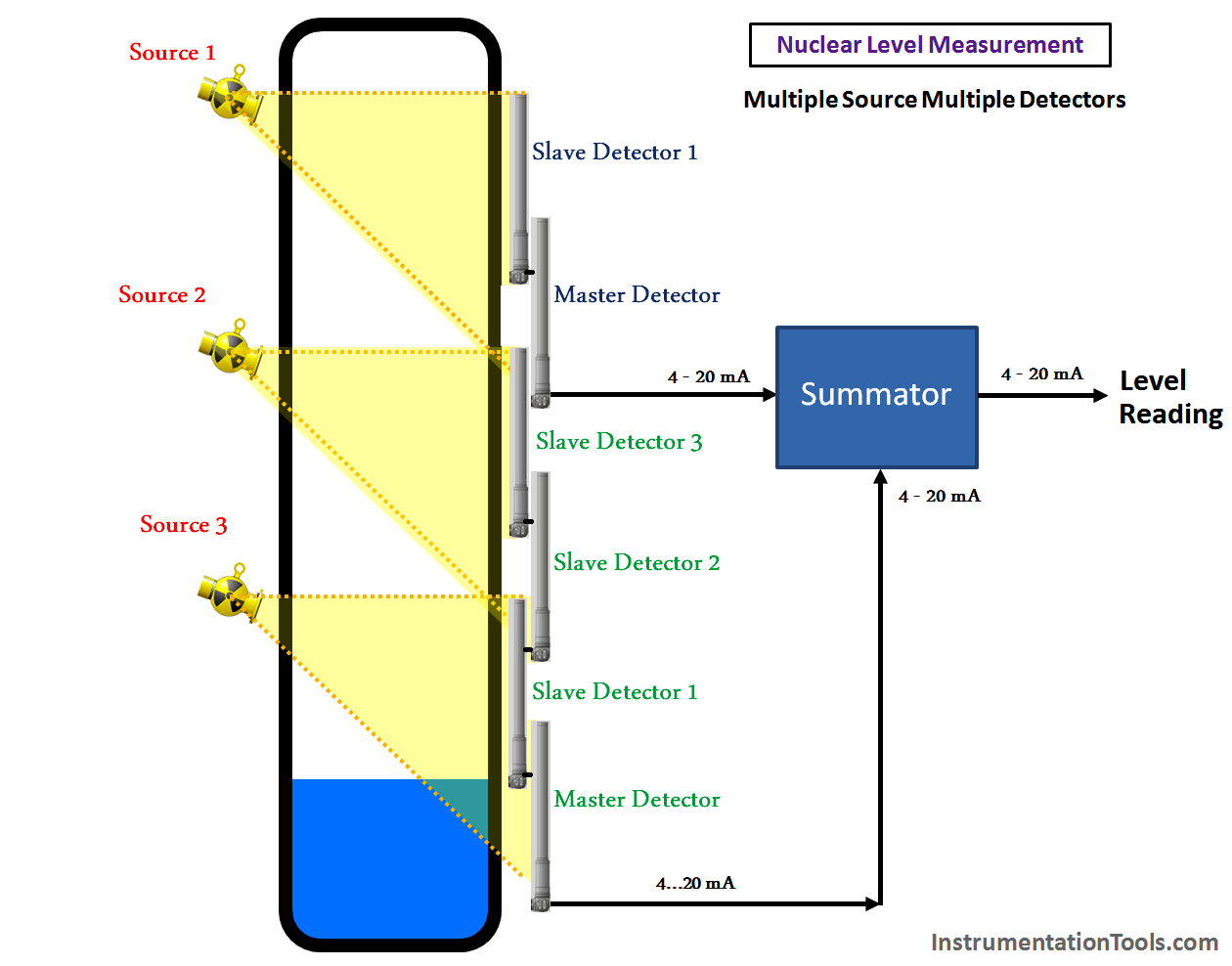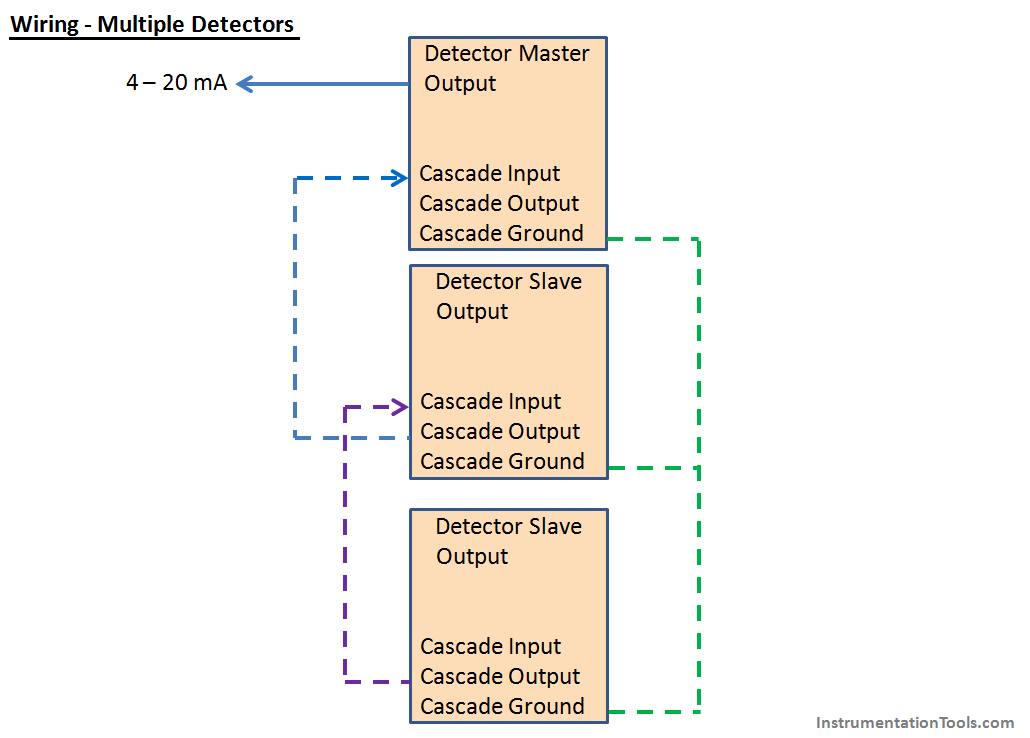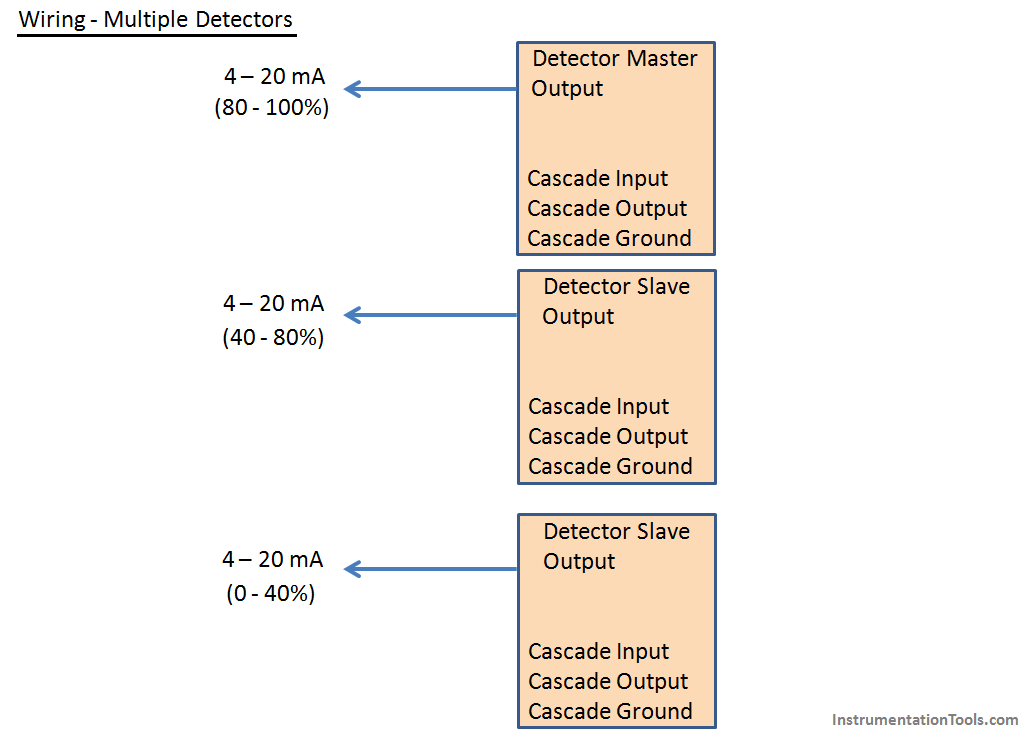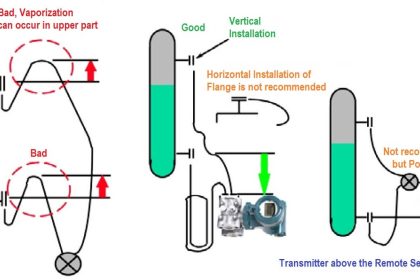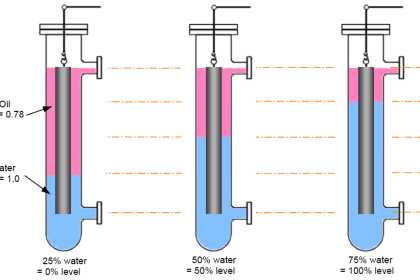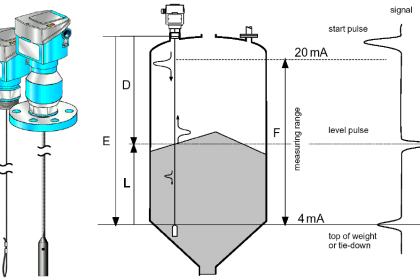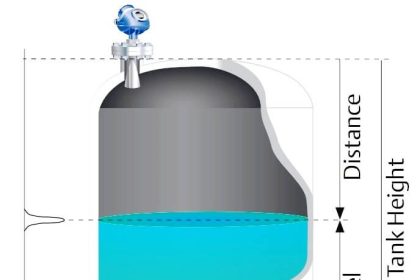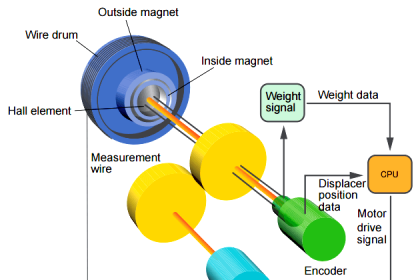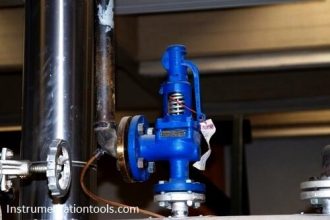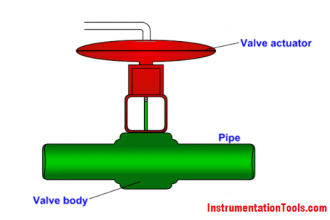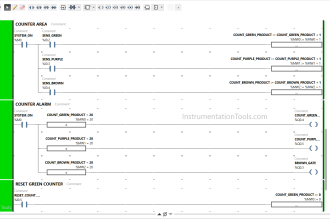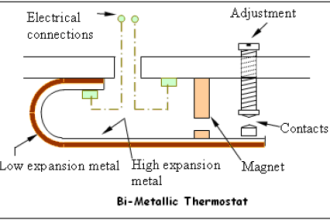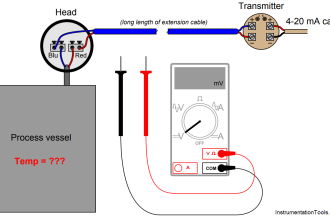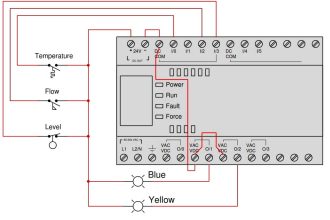A typical Nuclear / Nucleonic source and detector level measurement is shown in Below Fig 1.
Also see : Nuclear Level Detectors Animation
In certain process applications, the vessel or tank level measurements may vary from 2 mtrs to 30 mtrs or more. In the Nuclear / Nucleonic Level Instruments, detectors are available with standard lengths varying from 2 meter to 6 Meter. Standard length varies from supplier to supplier from 2 mtrs ~ 6 mtrs.
In the case of a larger length of level measurement, multiple detectors will be required, and the detectors need to be connected in cascade mode to cover complete level measurement length of the vessel. Sometimes the single nuclear source may not be able to cover the complete level measurement length, so multiple nuclear sources may be required. This is determined via Nuclear Source strength calculations.
When multiple detectors are used, the same required to be connected in Master-Slave configurations.
The Master detector aggregates (sums up) the signal received from all slave detectors and the output of the master detector corresponds to the total level measurement range of the vessel. The master output is connected to Control System (e.g. DCS) which may be 4-20 mA or serial signal. A detector located either at Top or at Bottom can be configured as Master Detector based on manufacturer recommendations.
The example shown in the article has master at the bottom.
Single Source – Multiple Detectors
In the below configuration, the nuclear source is single and there are two detectors that cover the level measurement range. Hence there is only one master and one slave detector required.
 Multiple Source – Multiple Detectors
Multiple Source – Multiple Detectors
In the below configuration, two no’s nuclear source and four numbers of detectors are required to cover the whole level measurement range. Hence there will be one master and three slave detectors.
The master detectors have the limitation of maximum no of slave detectors connected (which varies for each supplier); hence we may have to use more than one master detector.
In such cases, both master detectors outputs are connected to a summator device (which may be located at Field or it can be remote) and total output is connected to the DCS system (Below Fig).
Wiring of master and Slave detectors
The typical wiring diagram of multiple detectors is shown below. Each detector generally has cascade input, cascade output, cascade ground, and HART output capability. However when detectors are wired in master-slave configurations, then cascade output of slave is connected to cascade input of other slaves.
The master detector 4 -20 mA output is connected to DCS system which will correspond to total level measurement range.
In certain cases, the current output (4 ~ 20mA) of each detector is also taken to DCS system and the level measurements are mapped in DCS system to arrive at total level measurement (Below Fig 6).
Also Read : Level Transmitter & Level Gauge Design Tips
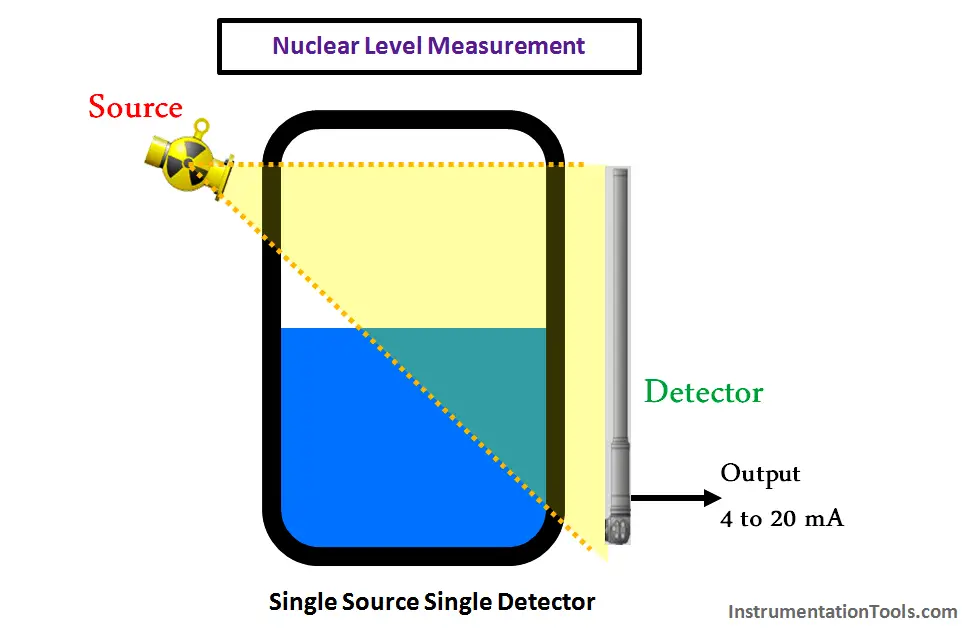
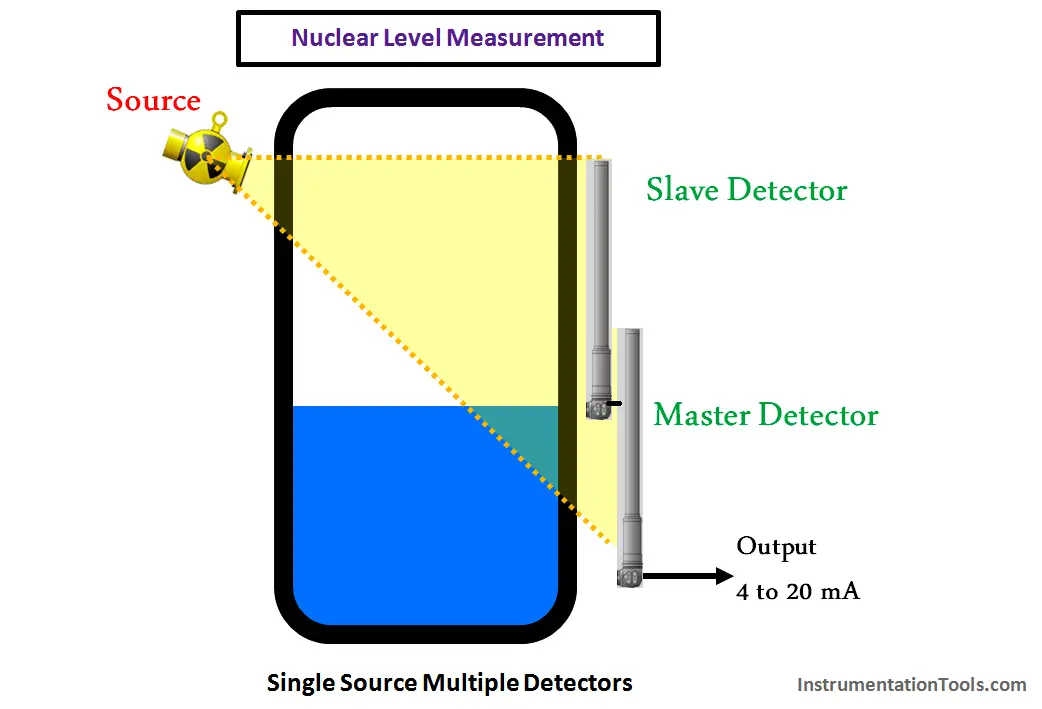 Multiple Source – Multiple Detectors
Multiple Source – Multiple Detectors